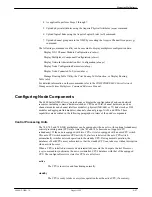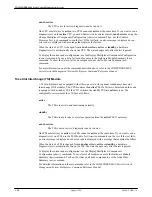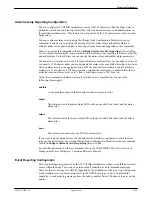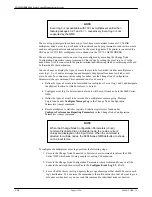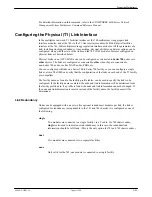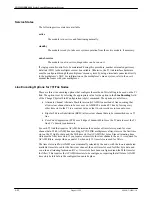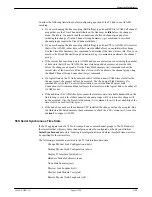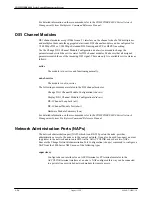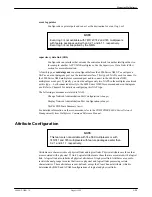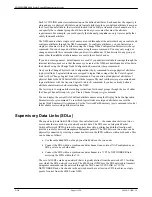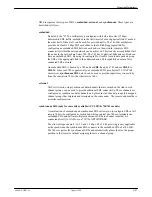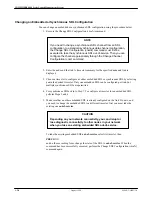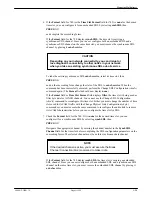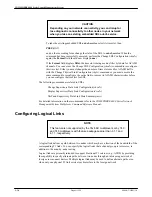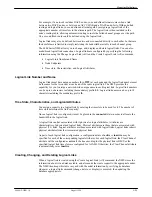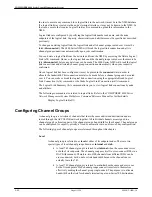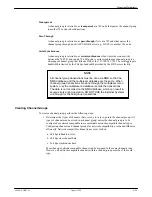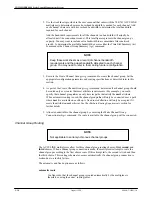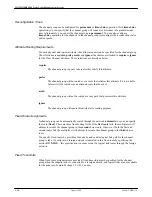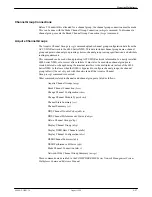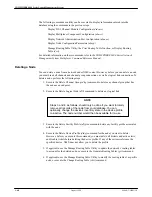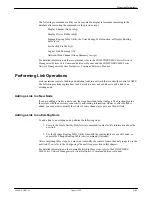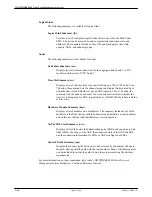
COMSPHERE 6800 Series Nework Management System
1-30
August 1994
6800-A2-GB21-10
CAUTION
Depending on your network connectivity, you can disrupt or
lose diagnostic connectivity to other nodes in your network
when you take an existing embedded SDL out-of-service.
To take the existing embedded SDL out-of-service, select its time slot, then
PRESS: GO
and on the succeeding form, change the state of the SDL to out-of-service. When the
command has been successfully executed, perform the Change SDL Configuration (chsdlc)
again (the Format field should now display none.)
If the Format field displays filler, the time slot is being used as filler byte data for ACAMI
channels. You cannot use the Change SDL Configuration (chsdlc) command to reconfigure
this time slot. Either you must change the number of time slots used for ACAMI traffic
with the Change Physical Link Configuration (chplc) command or you must execute the
same command to reconfigure the entire link to remove its ACAMI characteristics before
you can configure the time slot for SDL.
The following commands are related to SDLs.
Change Supervisory Data Link Configuration (chsdlc)
Display Supervisory Data Link Configuration (dssdlc)
NAP and Supervisory Data Link State Summary (nsss)
For detailed information on these commands, refer to the COMSPHERE 6800 Series Network
Management System Multiplexer Command Reference Manual.
Configuring Logical Links
NOTE
This feature is not supported by the 74x-56K multiplexers or by 740
and 745 multiplexers with feature packages earlier than 3.1.1 and
4.1.1, respectively.
A logical link defines a path between two nodes which may have a fraction of the bandwidth of the
corresponding T1 links. You can specify the logical links that a channel group is to traverse, in
addition to the node-by-node routing.
Logical links are primarily intended to support Fractional T1 services (e.g., ASDS) by providing
the capability to specify alternate paths between two nodes through an intervening network of
foreign cross-connect devices. Multiple logical links may be used to define alternate paths even
when only one physical T1 link exists at each interface to the foreign network.


